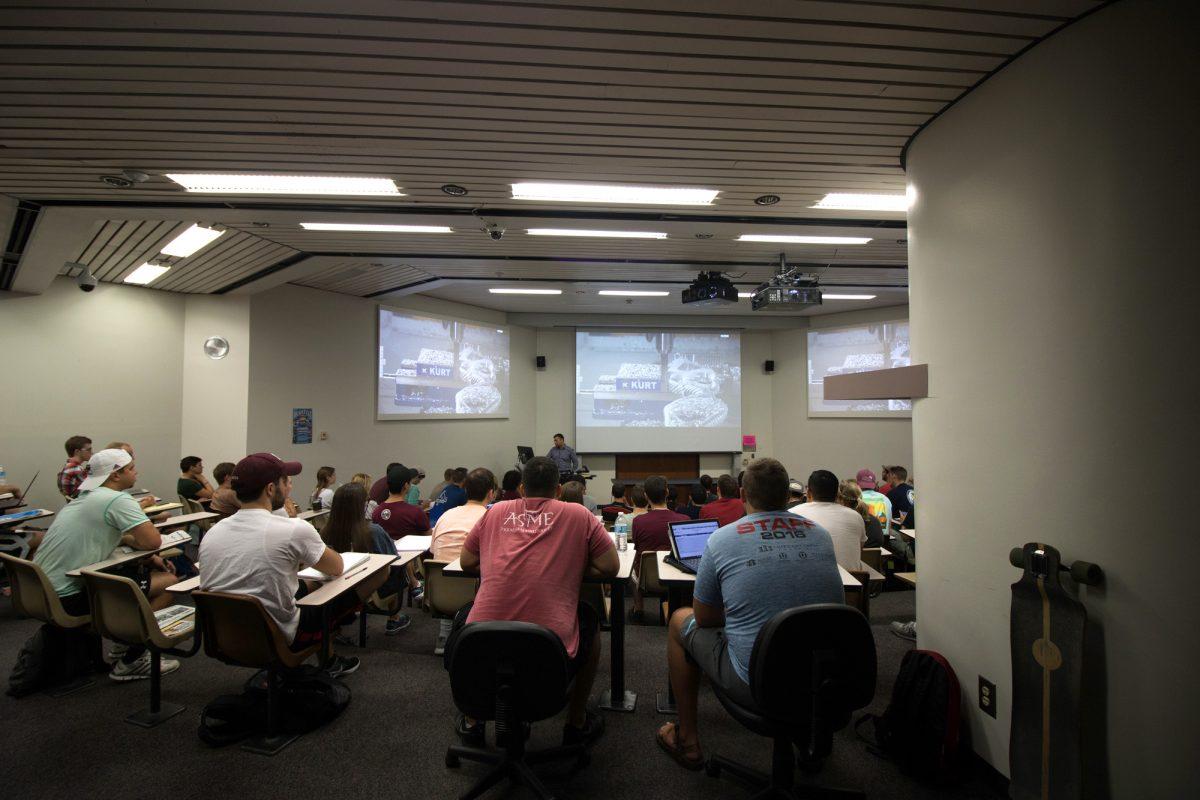Since 2006, Aggie STEM has been helping science, technology, engineering and math, or STEM, teachers across Texas by providing them with various professional development tools that improve their ability to teach STEM courses. Recently, the program has embraced a slightly different goal as well.
Led by Robert Capraro, mathematics education professor and co-director of Aggie STEM, the program is collaborating on behalf of Texas A&M with the “100k in 10” initiative, which, according to their website, aims to add 100,000 new, qualified STEM teachers to classrooms across the nation by 2021.
For A&M, the initiative set a goal of 950 STEM teachers by 2020 to address the acute lack of these teachers in Texas. However, according to Robert Capraro, the Aggie STEM program is aiming for 30,000 teachers, which far surpasses the minimum requirement set by the initiative, when it was first established.
According to Michael De Miranda, professor and head of the department of teaching, learning and culture, training new STEM teachers is akin to opening a new pipe within a hydrological system — the various STEM departments at A&M are pipes that funnel students into their careers, and as of now, the pipes to education certificates are closed for most students.
“We’ve got to open up pathways for math students, engineering students, students from the college of science and even the college of liberal arts,” De Miranda said.
The plan, according to De Miranda, is to provide options, as well as incentives, for students across various departments to pursue certificates and even degrees in teaching.
Robert Capraro said the plan is already in place, and not only for current Aggies.
“We have kind of like a three-pronged approach,” Robert Capraro said. “We have a face-to-face approach for in-service teachers, to get them converted so we have a STEM certificate. We have online professional development also for in-service teachers.”
These professional development programs, according to Robert Capraro, were designed to fit well into current teachers’ schedules.
“The courses are designed to fit a particular niche,” Robert Capraro said. “What they’re intended to do is be very specific about what that teachers need is at the moment, and give it to them in a small bit, so that they can actually implement it.”
The courses cover assignments and assessments that teachers commonly assign to their students, and offer teachers the opportunity to learn in a few hours why a particular assignment wasn’t received as well by their class compared to another, thus improving them as an instructor.
According to Mary Margaret Capraro, co-director of Aggie STEM alongside Robert Capraro, there is an option for graduate students as well, which could include in-service teachers.
“The STEM certificate is twelve hours, which is four courses,” Mary Margaret Capraro said. “Those are semester-long graduate courses here.”
According to Robert Capraro, one of the main goals of the program is to offer students an attainable option for obtaining a teaching certificate, and to make that certificate enticing.
De Miranda has also said he is enthusiastic about the program’s overall attractiveness to students interested in teaching.
“While engineers can work on great electrical devices and electronics, or greater water supplies or infrastructure, or smart concrete, or steel or any other materials, while those materials are great, students, as materials, hold higher and greater promise,” De Miranda said.
Aggie STEM Helping Alleviate Teacher Shortage
September 4, 2017
Photo by Photo by Cristian Aguirre
Texas A&M creates a new initiative to increase STEM teachers state-wide.
0
Donate to The Battalion
$1815
$5000
Contributed
Our Goal
Your donation will support the student journalists of Texas A&M University - College Station. Your contribution will allow us to purchase equipment and cover our annual website hosting costs, in addition to paying freelance staffers for their work, travel costs for coverage and more!
More to Discover










